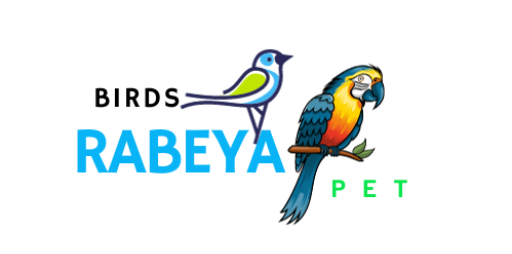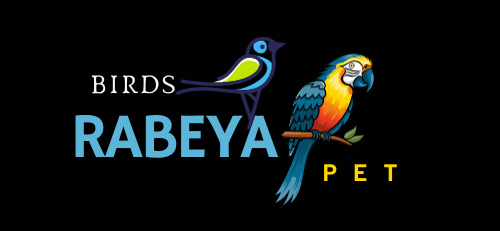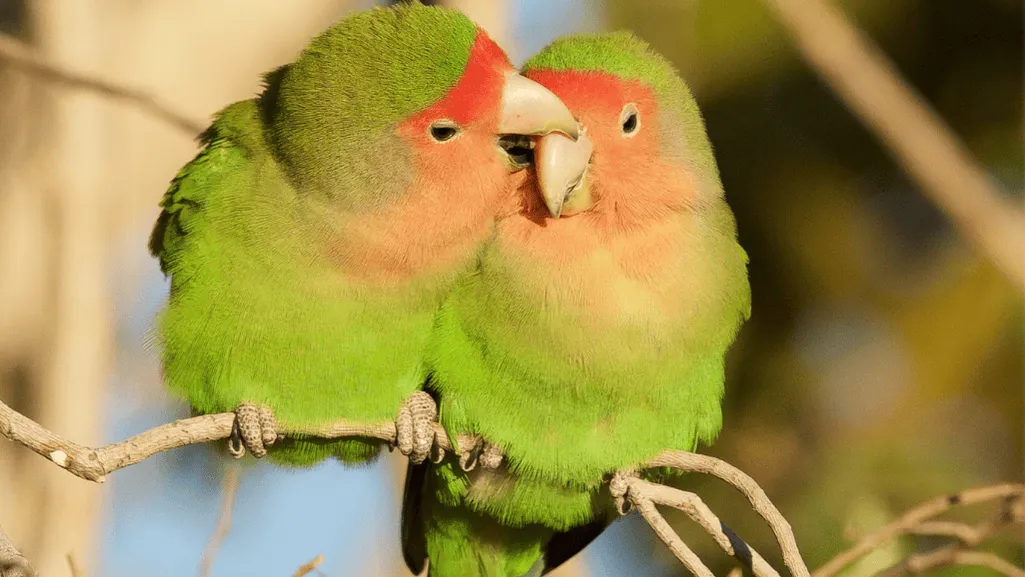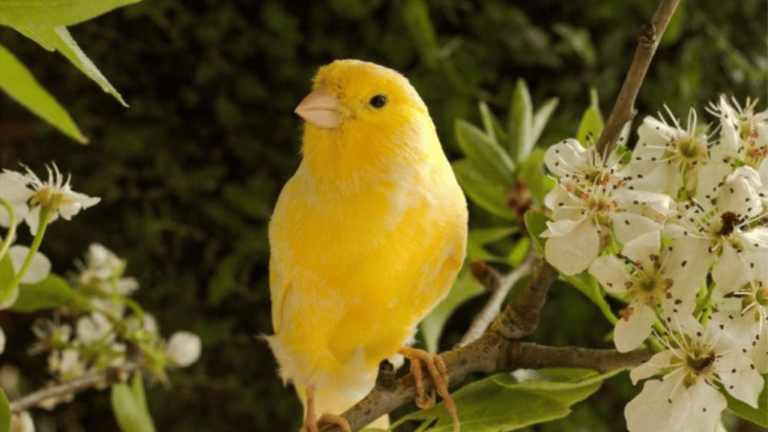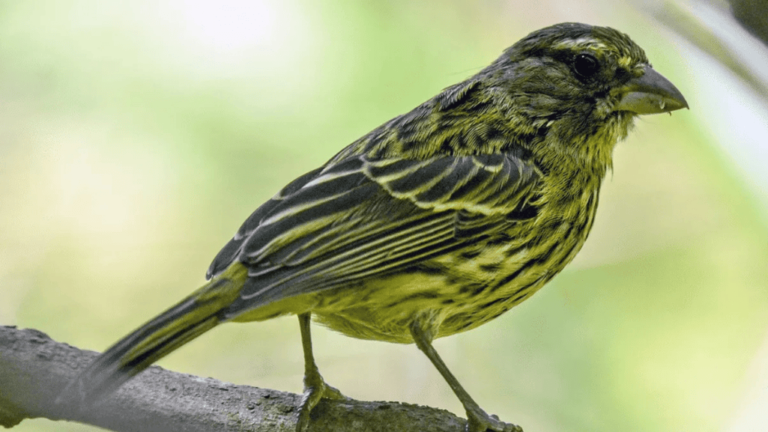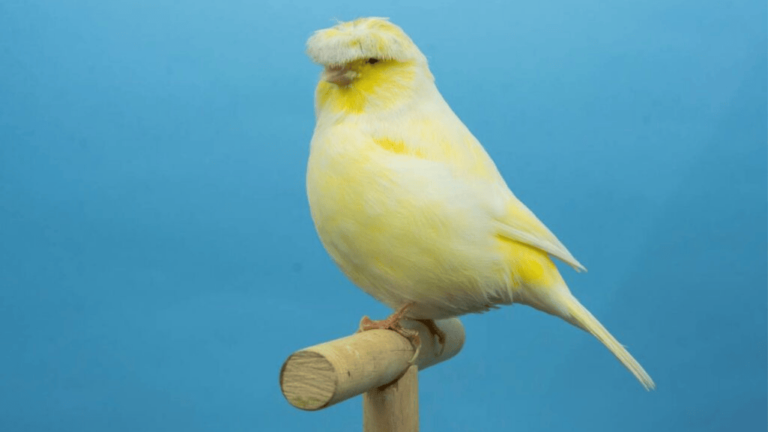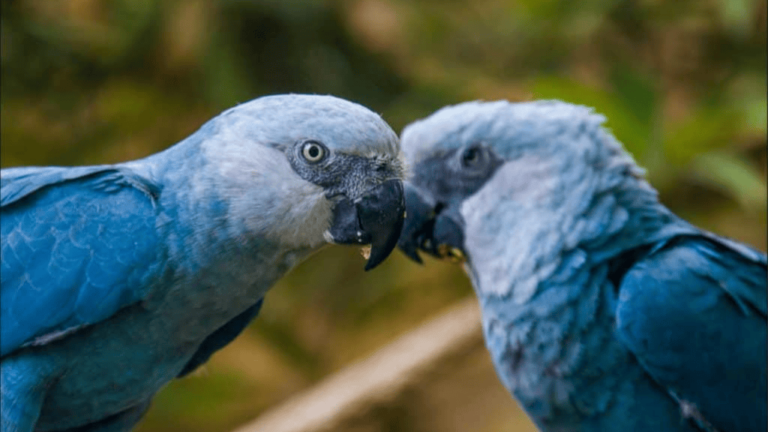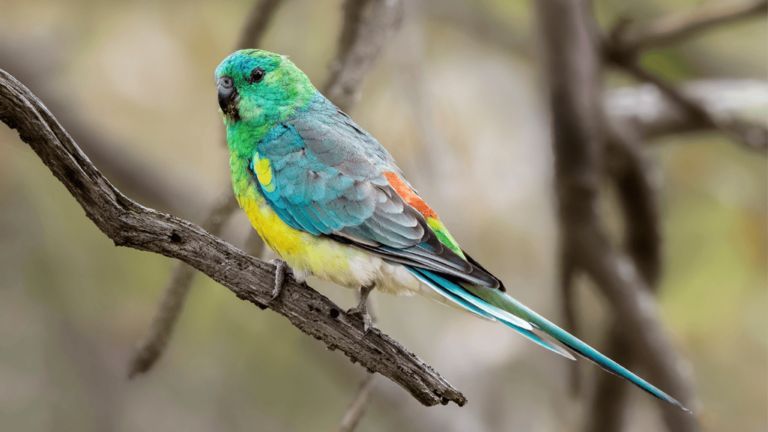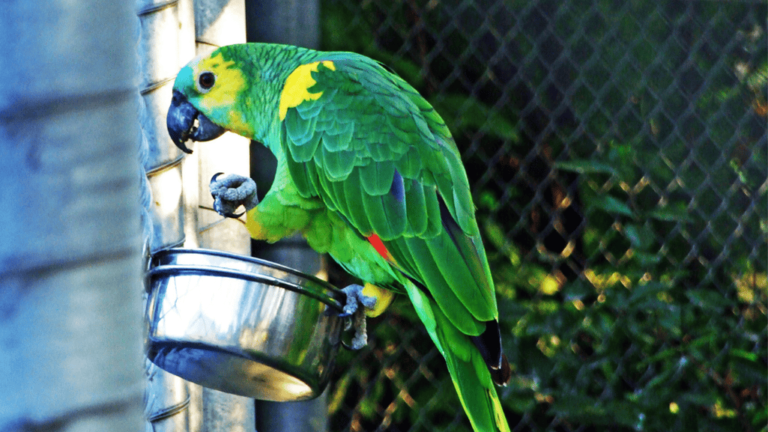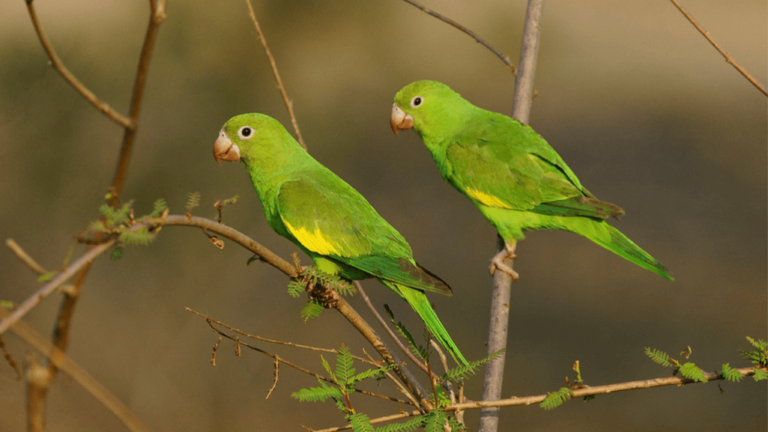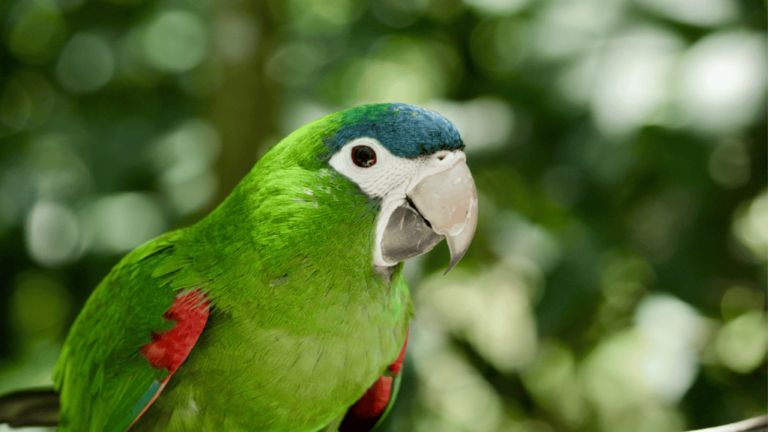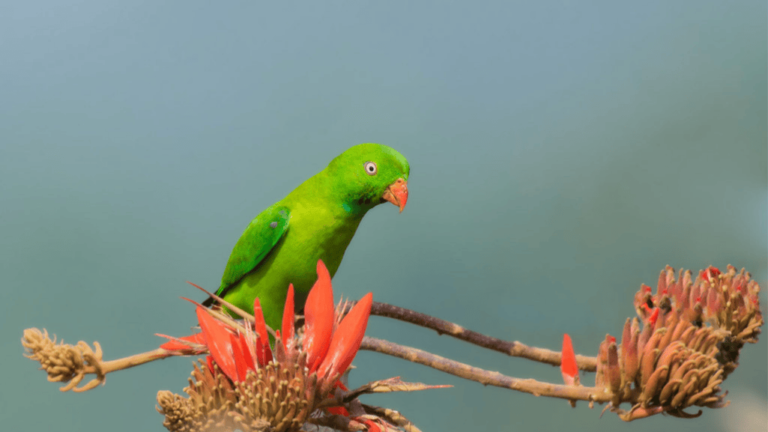Rosy-faced lovebirds make a lively, affectionate addition to the home — a top pick for first-time bird owners who want to learn about rosy faced lovebird care. These small parrots are intelligent, playful, and social, and they respond well to gentle training and regular interaction.
Notable features include a strong beak for climbing and manipulating toys, and a compact tail that varies in shape by individual. In captivity, healthy lovebirds commonly live roughly 10–15 years; excellent care (balanced diet, enrichment, and vet checks) can push lifespan toward the higher end of that range.
Originally from dry regions of Southwest Africa, lovebirds have become popular pet birds worldwide because they form strong bonds and enjoy social company. Many thrive best with a companion, though a single bird can do well with consistent human interaction, toys, and scheduled out-of-cage time.
Their home matters: provide a safe, well-sized cage (the industry-recommended minimum for a single bird is commonly cited as 18” L x 18” W x 24” H; larger is better, especially for pairs), a variety of perches, fresh water daily, and a rotation of safe toys to keep feathers and feet healthy. This guide covers housing, diet, health checks, and behavior to help you give your lovebird the best life — scroll to the sections below to jump straight to diet or care tips.
Key Takeaways
- With consistent care and vet checks, a healthy lovebird can commonly reach 10–15 years; some live longer when diet, housing, and enrichment are excellent.
- Make pelleted food the base of the diet and use seeds as a limited treat — this balance supports long-term health.
- Keep the habitat clean, provide UV or full-spectrum lighting where needed, and rotate toys to promote mental health and preenable feathers.
- Select a cage with appropriate bar spacing and minimum dimensions for safety and exercise; larger cages are better for pairs.
- Understand species-specific temperament and social needs—proper socialization improves behavior and bonding.
Introducing the Rosy Faced Lovebird
 The Rosy Faced Lovebird is a colorful, energetic parrot species prized in aviculture for personality and variety. Native to Southwest Africa — from Angola to South Africa — these lovebirds adapt well in captivity and as small companion parrots in homes worldwide.
The Rosy Faced Lovebird is a colorful, energetic parrot species prized in aviculture for personality and variety. Native to Southwest Africa — from Angola to South Africa — these lovebirds adapt well in captivity and as small companion parrots in homes worldwide.
Origin and Natural Habitat
Rosy-faced lovebirds favor dry, open scrub and rocky areas in their native range. They’ve also established feral populations in places like central Arizona, demonstrating adaptability to urban environments.
Physical Characteristics and Lifespan
These small parrots measure about 17–18 cm (roughly 6.7–7.1 in) and show rich greens with rosy face and neck hues in many color mutations. With attentive care—proper diet, clean habitat, enrichment, and vet care—many lovebirds enjoy long lives as companion birds.
Let’s look closer at status, distribution, and the traits that make these parrots popular pets and small aviary species.
| CategoryDetails | |
| Conservation Status | Least Concern (IUCN 3.1) |
| Average Dimensions | 17–18 cm (6.7–7.1 in) long; wingspan and tail vary by sub-type. |
| Distribution | Native to Southwest Africa; feral populations established in parts of Arizona and other urban areas. |
| Color Variations in Aviculture | Extensive — breeders have produced many color mutations through known genetic traits. |
| Breeding | Breeding season and timing vary by region; clutch sizes commonly range 4–6 eggs — incubation and fledging timelines depend on care and environment. |
| Known Habitats in Arizona | Often found in urban settings, nesting in buildings and vent structures — monitor local impact on native species. |
| Reaction to Temperature | They seek cooler microclimates when temperatures are extreme; provide shaded areas and fresh water in hot weather. |
As rosy-faced lovebirds adapt to new places, it’s important to track their impact on local habitats. When kept as pets, responsible ownership and understanding of species needs help these birds thrive while minimizing ecological disruption.
Creating a Comfortable Environment
A secure, well-planned habitat supports your lovebird’s health, behavior, and overall quality of life. Below is a quick setup checklist plus practical tips for cage placement, perches, lighting, and daily needs to keep your pet birds active and healthy.
Cage basics: aim for a minimum cage of 18 x 18 x 24 inches for a single bird, but choose the largest cage you can fit — especially for pairs. Ensure bar spacing is safe (about 1/2 inch to 5/8 inch for rosy-faced lovebirds) to prevent escape or injury. Provide multiple perches of varying diameters and textures (natural hardwood perches are best for foot health).
| RequirementDetails | |
| Temperature | Generally comfortable between 70–80°F (21–27°C); avoid drafts, sudden temperature swings, and direct heat sources. |
| Humidity | Aim for moderate humidity (about 50–60%); in dry homes use short supervised misting sessions or a humidifier to prevent dry skin/feather issues. |
| Lighting | Provide natural daylight; consider a full-spectrum or avian UV light for 10–12 hours daily if natural light is insufficient (use approved fixtures and follow safety guidelines). |
| Sleep | About 10–12 hours of quiet, dark sleep nightly helps prevent irritability and supports health. |
| Water Source | Fresh water daily is essential; some owners add a secondary bottle, but always monitor that it stays clean and accessible. |
Where to place the cage: choose a room with natural light and household activity so your lovebird feels part of the family, but avoid direct drafts, kitchens (fumes), and window areas with extreme sun. Keep the cage off the floor and away from household pets when unsupervised.
Cleanliness and safety: spot-clean daily, deep-clean the cage weekly, and replace perches or toys that show wear. Regular cleaning reduces the risk of infection and keeps your bird looking and feeling their best. Choose toys with safe materials (untreated wood, stainless steel, and bird-safe ropes) and avoid small parts that could be swallowed.
Want a printable cage-setup checklist or an annotated diagram showing perch placement and toy rotation? Download the quick setup PDF in the resources section below to make setup easy and safe for your pets.
Finally, add a few rotated toys and supervised out-of-cage time each day — both are essential for physical exercise and mental stimulation and help maintain healthy feathers, feet, and beak condition.
Essential Nutrition and Feeding Guidelines
Good nutrition is one of the top things that determines whether your lovebird stays healthy and bright. In aviculture, the best approach is a pelleted-based diet supplemented with fresh produce and small amounts of seeds. That combination keeps energy steady, supports feather condition, and reduces selective feeding that can cause nutrient gaps.
Understanding a Balanced Diet
Recommendation: make high-quality pelleted food the foundation of your lovebird’s meals. A practical target is 60–75% pellets for most adult birds — breeders and young birds may need adjusted ratios (more fat/protein for growing or breeding birds) under vet guidance. Seeds (including millet) are useful as a small part of the diet and as rewards, but they should not be the main food because they’re calorie-dense and can be nutrient-poor when fed alone.
Fresh fruits and vegetables should make up roughly 20–30% of the daily intake. Safe fruit options include apples (no seeds), grapes, and blueberries; vegetables such as zucchini, spinach, and cucumber are excellent sources of vitamins and fiber. Always wash produce thoroughly and remove any pits or toxic parts; for example, apple seeds and stone fruit pits should be removed before offering.
Safe and Hazardous Foods for Rosy Faced Lovebirds
Mix the diet, but avoid common toxic foods: avocados, chocolate, caffeine, alcohol, and high-salt or high-sugar human treats. Also avoid fruit pits and unwashed produce. When introducing new fruits or vegetables, offer small amounts first and watch for digestive upset.
Sample daily feeding plan (adult rosy-faced lovebird): 1) Pellets: base portion (measured) — roughly 60–75% of daily intake; 2) Fresh produce: small bowl of mixed veggies and a piece of fruit (20–30%); 3) Seeds/treats: a small portion of mixed seeds or millet as training rewards (5–10%). Adjust amounts by activity level, age, and breeding status.
Supplements and minerals: Provide a cuttlebone or mineral block for calcium and beak wear. Use multivitamin supplements only under the advice of an avian vet — over-supplementing can be harmful. Breeding birds and growing chicks may require tailored supplementation; consult your veterinarian for recommended products and dosages.
Feeding safety: change fresh food and water daily; clean dishes to avoid bacterial growth. Monitor your bird’s weight and droppings for changes — reduced appetite or unusual droppings can signal health issues and should prompt a vet visit.
For more detailed feeding guidelines, portion charts, and a downloadable sample meal plan for adults, juveniles, and breeding pairs, see the resources section at the end of this guide or consult an avian nutritionist. Thoughtful lovebird food choices and consistent feeding routines are some of the easiest ways to improve long-term health and behavior.
Rosy Faced Lovebird Socialization and Compatibility
Socialization is one of the most important parts of lovebird care. Rosy faced lovebirds are social creatures who often form strong pair bonds; many owners keep pairs because lovebirds enjoy company and mutual preening. If you choose to keep a single lovebird, plan for daily interaction, play, and supervised out-of-cage time so your pet doesn’t become lonely or bored.
Interacting with Your Feathered Friend
Spend consistent daily time with your bird — short, focused sessions (10–30 minutes) work well. Use positive reinforcement with small seed rewards or favorite treats to encourage desirable behaviors. Include interactive toys and foraging opportunities to mimic natural behavior and to keep them mentally stimulated.
Managing Aggression and Preventing Loneliness
When introducing new birds, follow a staged approach: quarantine new arrivals for health checks, start with visual introductions (cages side-by-side), then supervised short interactions before permanent co-housing. Watch for signs of aggression (lunging, biting, persistent chasing) and separate birds if safety is at risk. For single lovebirds, provide consistent social time, a mix of toys, and foraging puzzles to reduce boredom-related behaviors like screaming or feather picking.
| FactorImpact on Lovebird SocializationRecommendations | ||
| Pair Bonding | Supports emotional stability and reduces stress. | Allow birds to choose mates naturally; avoid forcing pairings. |
| Species Compatibility | Mixing species can increase aggression and stress. | Keep like species together; closely monitor any interspecies introductions. |
| Environmental Interaction | Critical for mental stimulation and wellbeing. | Provide daily interaction, varied toys, and supervised out-of-cage time. |
| Cage Size and Setup | Affects movement and social interaction. | Choose roomy cages for pairs and provide multiple perches and feeding stations to reduce competition. |
Following these tips will help your lovebirds bond and enjoy avian companionship. If you’re unsure whether to keep a single bird or a pair, try our compatibility quiz in the resources section to assess your time, space, and commitment before deciding.
The Importance of Regular Health Checks
Keeping your lovebird’s health in top shape requires routine checks and a relationship with an avian-savvy veterinarian. Early detection of common problems — respiratory infections, gastrointestinal issues, feather or skin disorders — lets you treat them before they become serious. Regular check-ups also give you a chance to review diet, supplements, and environmental factors that affect long-term health.
Watch for subtle signs at home: changes in droppings (color, consistency), decreased appetite, fluffed or ruffled feathers, reduced activity, labored breathing, or discharge from eyes or nares. Any of these warrant prompt veterinary attention.
Emergency signs — call a vet immediately if your bird is breathing with an open beak, gasping, having seizures, collapsing, bleeding, or showing sudden severe weakness.
| Health Check CategoryDetails | |
| Visual Inspections | Vets look for bright, clear eyes; clean, well-preened feathers; normal posture; and normal activity and breathing. |
| Physical Examination | Includes beak, eyes, skin, feet, weight check, and auscultation of heart and lungs. |
| Dietary Consultation | Vet advises on pellets vs. seeds, fresh food, and whether vitamins or calcium (cuttlebone/mineral block) are needed. |
| Behavioral Assessment | Assessment for stress, feather-plucking, aggression, or other abnormal behaviors. |
A practical annual checklist: weigh and record body weight, inspect feathers and skin, check droppings, examine beak and feet, review diet and any supplements, and discuss behavior or exposure risks. Healthy adult lovebirds generally benefit from at least one annual vet visit; birds that are ill, young, or breeding may need more frequent checks — ask your avian vet what schedule fits your bird.
Need a vet now? Check the resources section for links to locate an avian veterinarian near you and tele-vet options for urgent questions. Regular checks, a balanced diet, and safe housing are the foundation of long, healthy lives for your lovebirds.
Enrichment Activities for Mental and Physical Health
Enrichment is essential for lovebirds — not optional. Regular mental and physical stimulation reduces stress, prevents boredom behaviors (like feather plucking), and supports overall health. Below are practical toy ideas, training strategies, and a sample weekly plan you can implement today.
Toys and Play Ideas
Offer a variety of bird toys that encourage chewing, climbing, and problem-solving. Safe materials include untreated hardwood, stainless steel fittings, and natural-fiber ropes. Rotate toys weekly to keep novelty high — lovebirds like small toys they can hold with their feet and manipulate with their beak. Examples: wooden blocks, shreddable paper bundles, and treat-dispensing puzzles that build foraging skills.
Training and Behavioral Enrichment Strategies
Use short, positive training sessions (5–10 minutes, 1–2 times daily). Simple behaviors (step-up, targeting, recall) build trust and provide mental work. Reward with tiny seed bits or a favorite fruit piece. Positive reinforcement reduces unwanted behaviors and strengthens your bond.
| ActivityBenefits | |
| Foraging for food | Keeps birds busy, reduces frustration and aggression. |
| Foraging tree (DIY) | Encourages natural feeding behaviors and problem-solving. |
| Flight time | Promotes physical fitness and good feather condition. |
Quick DIY foraging toy (safe example): use a small untreated-wood block, drill shallow holes, hide small pellet bits or millet bunches inside wrapped in paper, and hang with stainless steel clips. Always avoid toxic glues, painted surfaces, or small removable parts that could be eaten.
Safety checklist for toys: non-toxic materials; no small detachable pieces; secure fastenings; regularly inspect for wear; rotate every 1–2 weeks. Download our toy safety checklist in the resources if you want a printable guide.
Weekly enrichment example: Monday—new foraging toy; Tuesday—training session (step-up/target); Wednesday—flight time + rotated perch; Thursday—shreddable toy; Friday—foraging puzzle; Weekend—longer supervised play and social time. Adjust to your schedule and your bird’s energy level.
Breeding Rosy Faced Lovebirds: Do’s and Don’ts
Considering breeding rosy faced lovebirds is a serious commitment — it’s about promoting healthy offspring and maintaining genetic diversity, not just producing more birds. Responsible breeding prioritizes the welfare of breeding pairs and chicks, suitable housing, appropriate diet, and sound record-keeping.
Lovebirds form strong pair bonds and display courtship and nest-building behaviors. If you plan to breed, learn the natural cycle and be prepared to support parents and chicks with targeted nutrition, quiet nesting space, and veterinary oversight.
- Do provide proper nest boxes: Use a secure, appropriately sized nest box (example: internal floor ~20×20 cm and entrance ~6–7 cm diameter) placed in a quiet area. Offer nesting material and ensure the box is predator- and draft-free.
- Do prioritize genetic diversity: Avoid breeding closely related birds. Keep records of parentage and health to reduce inherited problems and improve offspring vigor.
- Do monitor egg development: Candling at around 7–10 days can check fertility and embryo development — handle eggs minimally and gently.
- Don’t overbreed or ignore parent health: Allow recovery time between clutches, provide enhanced nutrition during breeding, and consult an avian vet about supplements and brood care.
Responsible-breeding checklist (brief): health certificates for parents, clear pedigree records, properly sized nest boxes, an extra quarantine cage for new or sick birds, a veterinary plan for eggs and chicks, and a rehoming strategy for any offspring you cannot keep.
Breeding is about improving the species’ health and maintaining ethical standards — not just increasing numbers. If you’re new to breeding, seek mentorship from experienced aviculturists and consult avian veterinarians before starting.
If you plan to breed rosy faced lovebirds, read local regulations and ensure you can responsibly place chicks if needed. Breeding well takes time, space, veterinary care, and a commitment to animal welfare.
Rosy Faced Lovebird Behavioral Traits and Management
Understanding typical lovebird behavior helps you build trust and avoid common problems. Rosy faced lovebirds are energetic, curious parrots that enjoy interaction, play, and social grooming; but they can also be territorial or stressed if understimulated. Good management balances social time, enrichment, and health care so your pet thrives.
Understanding Your Lovebird’s Behavior
Common behaviors include vocalizing to communicate, mutual preening in bonded pairs, investigating objects with the beak, and short bursts of flight. Territorial displays or aggression often show up around nests or favored perches. Observing body language — fluffed feathers, lowered head, or pinned eyes — helps you interpret mood and respond appropriately.
Environmental factors strongly influence behavior. Boredom, lack of toys, or insufficient social time can trigger feather plucking, excessive screeching, or aggression. Managing these causes — through enrichment, training, and proper socialization — reduces the likelihood of problems.
Tips for Handling Behavioral Issues
Use this troubleshooting flow: 1) Observe the symptom (e.g., feather plucking). 2) Rule out medical causes (schedule vet check). 3) Increase enrichment (foraging toys, rotated toys), add daily interaction and flight time. 4) Apply positive reinforcement training to replace unwanted behaviors. If the issue persists, consult an avian behaviorist or your vet for a targeted plan.
| Behavior TypeDescriptionManagement Strategy | ||
| Social Interaction | Lovebirds need social contact with humans or birds to remain emotionally healthy. | Provide daily interaction, consider a companion if appropriate, and schedule play and training time. |
| Feather Plucking | Often related to stress, boredom, or medical issues. | Rule out illness with a vet, then increase enrichment, vary diet, and use training to redirect behavior. |
| Aggression | May be territorial or due to poor socialization. | Provide space, separate if needed, use desensitization and positive reinforcement; get professional help for persistent aggression. |
Each lovebird is an individual — monitor behavior, adjust enrichment and care, and seek veterinary input for illness or persistent problems. Small, consistent changes often lead to big improvements in behavior and wellbeing.
Conclusion
Caring for rosy-faced lovebirds is a rewarding commitment that combines daily attention, good nutrition, safe housing, and enrichment. These small parrots bring energy and personality to a home, but they also rely on consistent lovebird care to thrive for many years.
These adaptable birds can do well in varied climates and countries, but the best outcomes come from replicating aspects of their natural lifestyle: social interaction, safe perches and branches, opportunities to forage, and a varied diet rather than seeds alone.
Key takeaways: prioritize a pelleted-based diet supplemented with fresh fruits and vegetables, provide fresh water daily and calcium sources like a cuttlebone, keep the cage and environment clean, offer daily interaction and toys for enrichment, and schedule regular vet check-ups to catch illness early.
Download the Rosy-Faced Lovebird Quick Care Checklist in the resources below to get a printable summary of housing, diet, enrichment, and vet care. If you’re ready, book a consultation with an avian vet to tailor a plan for your bird’s age, life stage, and health needs.
FAQ
What are the basics of rosy faced lovebird care?
Start with a spacious cage, high-quality pellets as the diet base, fresh fruits and vegetables daily, clean water, varied perches and toys, daily social time, and annual vet checks. Adjust care for young, elderly, or breeding birds.
How should I set up a habitat for my lovebird?
Choose a safe room with natural light (avoid kitchens and drafts), a cage larger than 18x18x24 inches when possible, multiple perches of different diameters, clean dishes, fresh water, and rotated toys to encourage activity.
What should I feed my lovebird?
Use a high-quality pellet as the main food, offer fresh fruits and vegetables daily, and give seeds (including millet) sparingly as treats. Provide calcium sources such as a cuttlebone and consult your avian vet before adding vitamin supplements.
